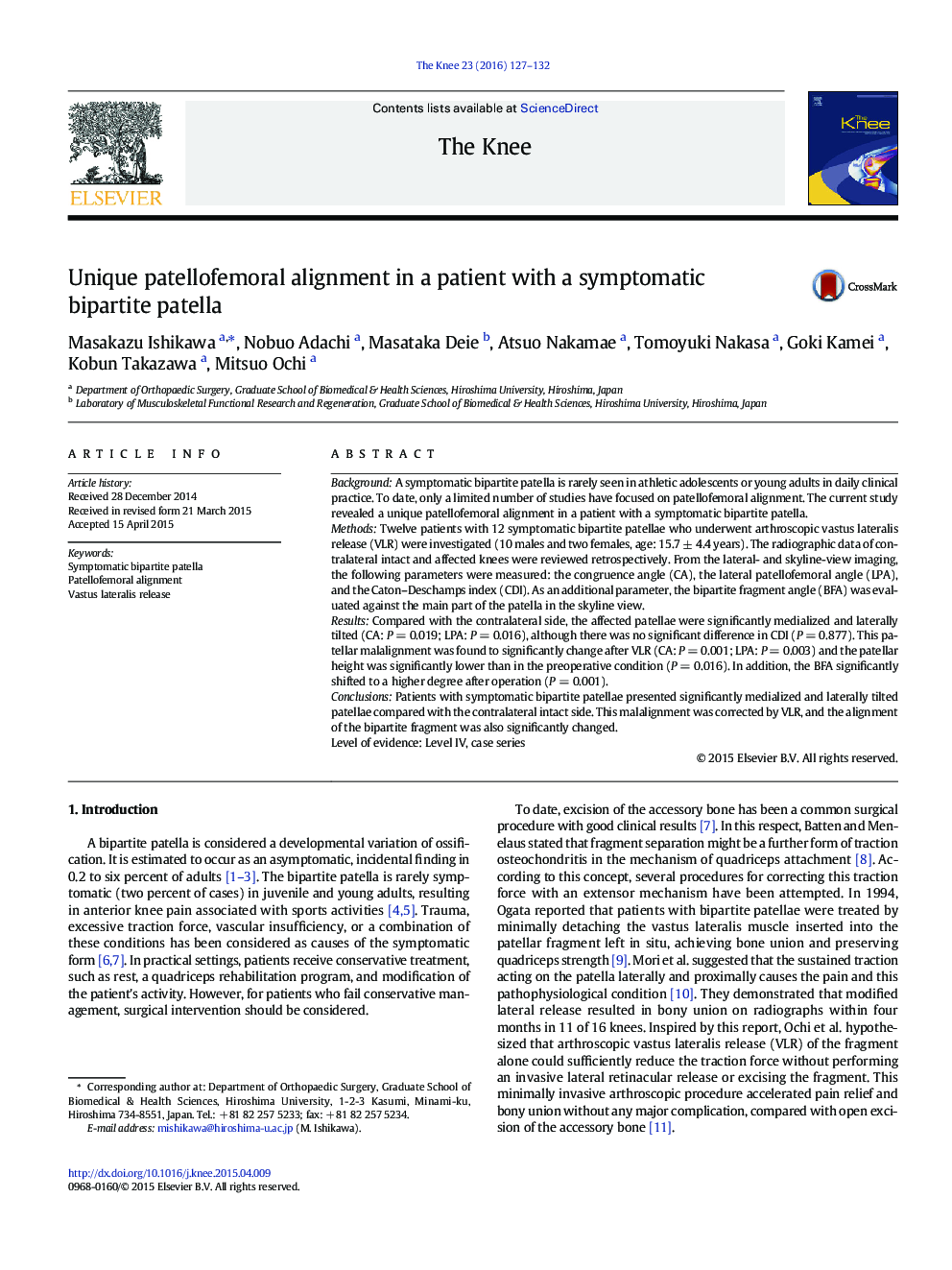| Article ID | Journal | Published Year | Pages | File Type |
|---|---|---|---|---|
| 4077203 | The Knee | 2016 | 6 Pages |
•Patellofemoral alignment was studied in patients with symptomatic bipartite patellae.•The affected patellae were significantly medialized and laterally tilted.•Malalignment of the patella was corrected significantly by vastus lateralis release.•After operation, the alignment of the bipartite fragment was significantly changed.
BackgroundA symptomatic bipartite patella is rarely seen in athletic adolescents or young adults in daily clinical practice. To date, only a limited number of studies have focused on patellofemoral alignment. The current study revealed a unique patellofemoral alignment in a patient with a symptomatic bipartite patella.MethodsTwelve patients with 12 symptomatic bipartite patellae who underwent arthroscopic vastus lateralis release (VLR) were investigated (10 males and two females, age: 15.7 ± 4.4 years). The radiographic data of contralateral intact and affected knees were reviewed retrospectively. From the lateral- and skyline-view imaging, the following parameters were measured: the congruence angle (CA), the lateral patellofemoral angle (LPA), and the Caton–Deschamps index (CDI). As an additional parameter, the bipartite fragment angle (BFA) was evaluated against the main part of the patella in the skyline view.ResultsCompared with the contralateral side, the affected patellae were significantly medialized and laterally tilted (CA: P = 0.019; LPA: P = 0.016), although there was no significant difference in CDI (P = 0.877). This patellar malalignment was found to significantly change after VLR (CA: P = 0.001; LPA: P = 0.003) and the patellar height was significantly lower than in the preoperative condition (P = 0.016). In addition, the BFA significantly shifted to a higher degree after operation (P = 0.001).ConclusionsPatients with symptomatic bipartite patellae presented significantly medialized and laterally tilted patellae compared with the contralateral intact side. This malalignment was corrected by VLR, and the alignment of the bipartite fragment was also significantly changed.Level of evidence: Level IV, case series
